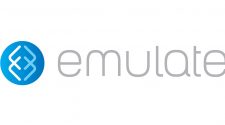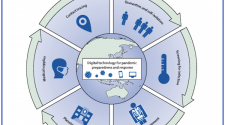Dublin, Dec. 21, 2020 (GLOBE NEWSWIRE) — The “Containerized Data Center Market: Global Industry Trends, Share, Size, Growth, Opportunity and Forecast 2020-2025” report has been added to ResearchAndMarkets.com’s offering.
The global containerized data center market grew at a CAGR of around 16% during 2014-2019. A containerized data center refers to a modular and portable data center pre-installed inside a shipping container. The containers, or pods, can house all the essential data center components, such as servers, racks, power, heating, cooling, networking, storage and computing devices. In comparison to the traditionally used data centers, they require minimal operational space, aid in managing heavy data traffic and act as a caching and data aggregation point between the users and the servers. As a result, they find extensive applications across various industries, such as banking, financial services and insurance (BFSI), telecommunications, information technology (IT), defense, healthcare and education.
Significant growth in the IT industry across the globe represents one of the key factors creating a positive outlook for the market. With the widespread adoption of cloud computing solutions by organizations, there has been a substantial increase in the demand for portable and energy-efficient data centers with plug-and-play capabilities. In line with this, the increasing demand for edge computing and scalable data computing solutions is also driving the market growth.
Furthermore, the sudden outbreak of the coronavirus disease (COVID-19) has further led to the utilization of digital banking solutions that are based on containerized data centers, thereby providing growth opportunities to the market players. Various technological advancements, such as the integration with the Internet of Things (IoT) and disaster recovery systems, are acting as other growth-inducing factors. Organizations are deploying containerized data centers to secure their data stored in disaster-prone areas and ensuring optimal performance without disturbing the core systems. Other factors, including the increasing demand for these data centers from the defense sectors, along with extensive research and development (R&D) activities, are anticipated to drive the market further. Looking forward, the publisher expects the global containerized data center market to continue its strong growth during the next five years.
Key Market Segmentation:
The publisher provides an analysis of the key trends in each sub-segment of the global containerized data center market report, along with forecasts for growth at the global, regional and country level from 2020-2025. Our report has categorized the market based on region, type of container, organization size, application and end use industry.
Breakup by Type of Container:
- 20 FT Container
- 40 FT Container
- Customized Container
Breakup by Organization Size:
- Small Organization
- Midsize Organization
- Large Organization
Breakup by Application:
- Greenfield
- Brownfield
- Upgrade and Consolidation
Breakup by End Use Industry:
- BFSI
- IT and Telecommunications
- Government
- Education
- Healthcare
- Defense
- Entertainment and Media
- Others
Breakup by Region:
- North America
- United States
- Canada
- Asia Pacific
- China
- Japan
- India
- South Korea
- Australia
- Indonesia
- Others
- Europe
- Germany
- France
- United Kingdom
- Italy
- Spain
- Russia
- Others
- Latin America
- Brazil
- Mexico
- Others
- Middle East and Africa
Competitive Landscape:
The report has also analysed the competitive landscape of the market with some of the key players being Cisco Systems Inc., Dell Technologies Inc., Eaton Corporation plc, Hewlett Packard Enterprise Comp, Huawei Technologies Co. Ltd., International Business Machines Corporation, Johnson Controls, Rittal GmbH & Co. KG (Friedhelm Loh Group), Schneider Electric SE and ZTE Corporation.
Key Questions Answered in This Report:
- How has the global containerized data center market performed so far and how will it perform in the coming years?
- What has been the impact of COVID-19 on the global containerized data center market?
- What are the key regional markets?
- What is the breakup of the market based on the type of container?
- What is the breakup of the market based on the organization size?
- What is the breakup of the market based on the application?
- What is the breakup of the market based on the end use industry?
- What are the various stages in the value chain of the industry?
- What are the key driving factors and challenges in the industry?
- What is the structure of the global containerized data center market and who are the key players?
- What is the degree of competition in the industry?
Key Topics Covered:
1 Preface
2 Scope and Methodology
2.1 Objectives of the Study
2.2 Stakeholders
2.3 Data Sources
2.3.1 Primary Sources
2.3.2 Secondary Sources
2.4 Market Estimation
2.4.1 Bottom-Up Approach
2.4.2 Top-Down Approach
2.5 Forecasting Methodology
3 Executive Summary
4 Introduction
4.1 Overview
4.2 Key Industry Trends
5 Global Containerized Data Center Market
5.1 Market Overview
5.2 Market Performance
5.3 Impact of COVID-19
5.4 Market Forecast
6 Market Breakup by Type of Container
6.1 20 FT Container
6.1.1 Market Trends
6.1.2 Market Forecast
6.2 40 FT Container
6.2.1 Market Trends
6.2.2 Market Forecast
6.3 Customized Container
6.3.1 Market Trends
6.3.2 Market Forecast
7 Market Breakup by Organization Size
7.1 Small Organization
7.1.1 Market Trends
7.1.2 Market Forecast
7.2 Midsize Organization
7.2.1 Market Trends
7.2.2 Market Forecast
7.3 Large Organization
7.3.1 Market Trends
7.3.2 Market Forecast
8 Market Breakup by Application
8.1 Greenfield
8.1.1 Market Trends
8.1.2 Market Forecast
8.2 Brownfield
8.2.1 Market Trends
8.2.2 Market Forecast
8.3 Upgrade and Consolidation
8.3.1 Market Trends
8.3.2 Market Forecast
9 Market Breakup by End Use Industry
9.1 BFSI
9.1.1 Market Trends
9.1.2 Market Forecast
9.2 IT and Telecommunications
9.2.1 Market Trends
9.2.2 Market Forecast
9.3 Government
9.3.1 Market Trends
9.3.2 Market Forecast
9.4 Education
9.4.1 Market Trends
9.4.2 Market Forecast
9.5 Healthcare
9.5.1 Market Trends
9.5.2 Market Forecast
9.6 Defense
9.6.1 Market Trends
9.6.2 Market Forecast
9.7 Entertainment and Media
9.7.1 Market Trends
9.7.2 Market Forecast
9.8 Others
9.8.1 Market Trends
9.8.2 Market Forecast
10 Market Breakup by Region
10.1 North America
10.1.1 United States
10.1.1.1 Market Trends
10.1.1.2 Market Forecast
10.1.2 Canada
10.1.2.1 Market Trends
10.1.2.2 Market Forecast
10.2 Asia Pacific
10.2.1 China
10.2.1.1 Market Trends
10.2.1.2 Market Forecast
10.2.2 Japan
10.2.2.1 Market Trends
10.2.2.2 Market Forecast
10.2.3 India
10.2.3.1 Market Trends
10.2.3.2 Market Forecast
10.2.4 South Korea
10.2.4.1 Market Trends
10.2.4.2 Market Forecast
10.2.5 Australia
10.2.5.1 Market Trends
10.2.5.2 Market Forecast
10.2.6 Indonesia
10.2.6.1 Market Trends
10.2.6.2 Market Forecast
10.2.7 Others
10.2.7.1 Market Trends
10.2.7.2 Market Forecast
10.3 Europe
10.3.1 Germany
10.3.1.1 Market Trends
10.3.1.2 Market Forecast
10.3.2 France
10.3.2.1 Market Trends
10.3.2.2 Market Forecast
10.3.3 United Kingdom
10.3.3.1 Market Trends
10.3.3.2 Market Forecast
10.3.4 Italy
10.3.4.1 Market Trends
10.3.4.2 Market Forecast
10.3.5 Spain
10.3.5.1 Market Trends
10.3.5.2 Market Forecast
10.3.6 Russia
10.3.6.1 Market Trends
10.3.6.2 Market Forecast
10.3.7 Others
10.3.7.1 Market Trends
10.3.7.2 Market Forecast
10.4 Latin America
10.4.1 Brazil
10.4.1.1 Market Trends
10.4.1.2 Market Forecast
10.4.2 Mexico
10.4.2.1 Market Trends
10.4.2.2 Market Forecast
10.4.3 Others
10.4.3.1 Market Trends
10.4.3.2 Market Forecast
10.5 Middle East and Africa
10.5.1 Market Trends
10.5.2 Market Breakup by Country
10.5.3 Market Forecast
11 SWOT Analysis
11.1 Overview
11.2 Strengths
11.3 Weaknesses
11.4 Opportunities
11.5 Threats
12 Value Chain Analysis
13 Porters Five Forces Analysis
13.1 Overview
13.2 Bargaining Power of Buyers
13.3 Bargaining Power of Suppliers
13.4 Degree of Competition
13.5 Threat of New Entrants
13.6 Threat of Substitutes
14 Price Analysis
15 Competitive Landscape
15.1 Market Structure
15.2 Key Players
15.3 Profiles of Key Players
15.3.1 Cisco Systems Inc.
15.3.1.1 Company Overview
15.3.1.2 Product Portfolio
15.3.1.3 Financials
15.3.1.4 SWOT Analysis
15.3.2 Dell Technologies Inc.
15.3.2.1 Company Overview
15.3.2.2 Product Portfolio
15.3.2.3 Financials
15.3.2.4 SWOT Analysis
15.3.3 Eaton Corporation Plc
15.3.3.1 Company Overview
15.3.3.2 Product Portfolio
15.3.3.3 Financials
15.3.3.4 SWOT Analysis
15.3.4 Hewlett Packard Enterprise Comp
15.3.4.1 Company Overview
15.3.4.2 Product Portfolio
15.3.4.3 Financials
15.3.4.4 SWOT Analysis
15.3.5 Huawei Technologies Co. Ltd.
15.3.5.1 Company Overview
15.3.5.2 Product Portfolio
15.3.5.3 SWOT Analysis
15.3.6 International Business Machines Corporation
15.3.6.1 Company Overview
15.3.6.2 Product Portfolio
15.3.6.3 Financials
15.3.6.4 SWOT Analysis
15.3.7 Johnson Controls
15.3.7.1 Company Overview
15.3.7.2 Product Portfolio
15.3.7.3 Financials
15.3.7.4 SWOT Analysis
15.3.8 Rittal GmbH & Co. KG (Friedhelm Loh Group)
15.3.8.1 Company Overview
15.3.8.2 Product Portfolio
15.3.9 Schneider Electric Se
15.3.9.1 Company Overview
15.3.9.2 Product Portfolio
15.3.9.3 Financials
15.3.9.4 SWOT Analysis
15.3.10 ZTE Corporation
15.3.10.1 Company Overview
15.3.10.2 Product Portfolio
15.3.10.3 Financials
For more information about this report visit https://www.researchandmarkets.com/r/qbke5j
Research and Markets also offers Custom Research services providing focused, comprehensive and tailored research.
CONTACT: ResearchAndMarkets.com Laura Wood, Senior Press Manager [email protected] For E.S.T Office Hours Call 1-917-300-0470 For U.S./CAN Toll Free Call 1-800-526-8630 For GMT Office Hours Call +353-1-416-8900

















